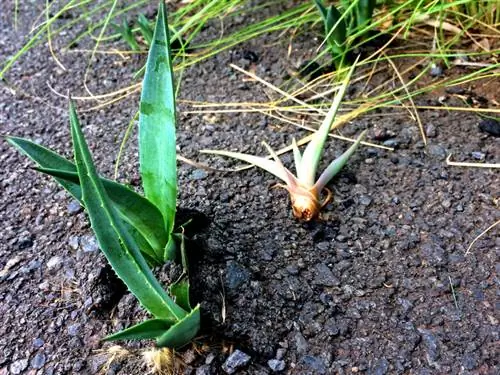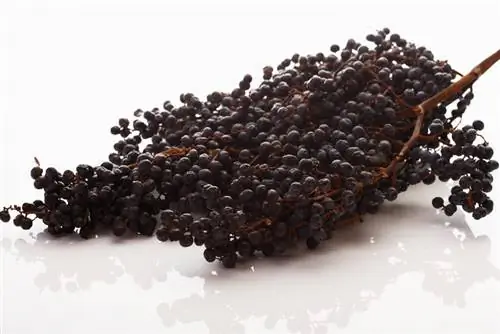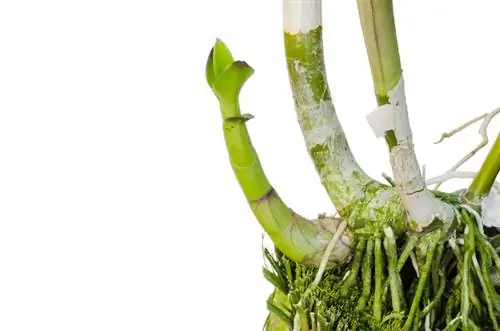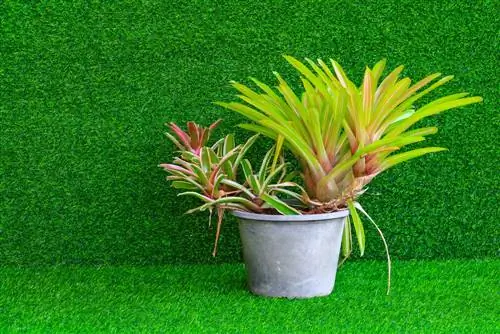- Author admin [email protected].
- Public 2023-12-16 16:46.
- Last modified 2025-01-23 11:20.
Many types of agave only bloom after decades, which is why seeds for propagation are correspondingly rare and difficult to find. It is therefore very convenient for hobby gardeners that most agaves themselves lay the basis for the expansion of the plant population via offshoots called Kindel.

How do you properly separate Agave Kindel?
Agave Kindel can be separated during dry weather periods in spring and early summer. For children with their own roots, separate the root connection with a sharp knife or planting scissors. If the children are sitting directly on the stem, cut deep enough but without damaging the stem of the mother plant. Then root the children in special cactus soil or a mixture of potting soil and gravel or sand.
The right time to separate the children
In principle, it is possible to separate the children at different times, as non-frost-hardy agaves overwinter in the house, but some types of agaves are also cultivated in the house all year round. In potted specimens, it is not uncommon for the buds to form during the winter rest phase. To minimize stress on the plants, it is advisable to separate them together with repotting after wintering. If possible, choose dry weather periods in spring and early summer so that all interfaces can dry well for at least a few days after cutting. For smaller agave species, the children should be at least 5 cm tall, for larger species about 10 cm.
Separate children with their own roots
Some children grow in the agave pot at a certain distance from the mother plant, but are still connected to its roots. In these cases, undermine the root connection and cut cleanly with a sharp knife or planting scissors. Wait at least a few hours or even days to allow the interface on the mother plant to dry. Then you can fill up the missing substrate again. Be careful about watering too often: The mother plant should not be watered more to compensate for its reduced root mass, but rather a little less.
Separate any children directly attached to the stem
In some agaves, the so-called kindles form directly on the plant stem and initially without their own roots. With these offshoots, you should make sure to cut off the children deep enough so that their leaf rosette does not fall apart. At the same time, you should not cut too deeply into the stem of the mother plant. You can also treat the interfaces with some charcoal dust to be on the safe side. To root, the Kindel are placed about 1 cm deep either in special cactus soil or in a mixture of ordinary potting soil and one of the following substrates:
- Pumice gravel
- Lava Sand
- Quartz sand
Keep the substrate for the root-forming Kindel evenly moist after about a week. As a general rule, water only very sparingly, otherwise agaves will quickly show disease-like symptoms.
Tip
If a large agave species blooms after more than 20 or 30 years, this usually results in the death of the plant. However, you may be able to avoid this natural death of the plant if you remove all the children in good time and repot the magnificent specimen in another planter.






